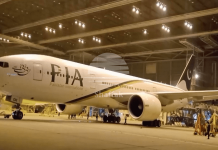ISLAMABAD: Pakistan can attract huge investments in a number of industries, where the labour cost is a bare minimum compared to regional peers, to gain competitiveness and turn them into potential export-oriented sectors, reports WealthPK.
This low-cost, high-margin production of commodities will lead to long-term, dynamic growth, thus helping a developing country like Pakistan to move up the economic ladder.
According to a report released by the China-Pakistan Economic Corridor Authority, Pakistan offers cheaper labour than other countries in the region.
The graph below clearly indicates that Pakistan had the lowest minimum wage rate index compared to other countries in the region from 2018 to 2021.
The China-Pakistan wage rate differential was more than twice the prevalent US dollar parity rates. Chinese labour costs were 2.1x in 2018 and continue to be around twice as expensive as Pakistani labour.
It is to be noted here that 60% of the labour force in Pakistan is under the age of 40, playing a key role in growth of the domestic economy and creating higher disposable incomes for the middle class.
Pakistan has a comparative advantage in some labour-intensive products that might be encouraged to become export engines. Footwear, clothes, video and radio equipment, trunks and cases, cotton yarn, iron, agro-processing industries, dyeing and colouring materials, the printing industry, glass and glassware are just a few of the subsectors that might help boost exports in future.
As China is realising the fact that it no longer has a competitive advantage in producing labour-intensive goods, it mulls relocating the manufacturing to countries with low-unit labour costs, or outsourcing labour-intensive aspects of the manufacturing process to low-income countries while focusing on aspects that require skilled labour, technical know-how and capital.
Pakistan, which has also signed a free trade agreement with China, has been seizing this opportunity by attracting Chinese companies to special economic zones (SEZs).
Also, local business houses are launching joint ventures with Chinese firms.
SEZs in Pakistan offer the best possible fiscal incentives to investors, including the skilled and inexpensive labour, easy availability of raw materials, competitive energy tariffs and low freight costs.
Pakistan also wants to strengthen its economic relations with China through trade, investment and the transfer of technology. While enhancing trade with the US and Europe, Pakistan is also focusing on the most dynamic parts of the world, including Asia. Pakistan also wants to build regional integration in South Asia, which offers low-cost production and high pay-offs.
Through Gwadar Port, Pakistan has provided an economically viable trade route for the Central Asian Republics and Iran. Pakistan will also likely pay attention to East Asia, which is one of the fastest-growing regions in the world.
INP





